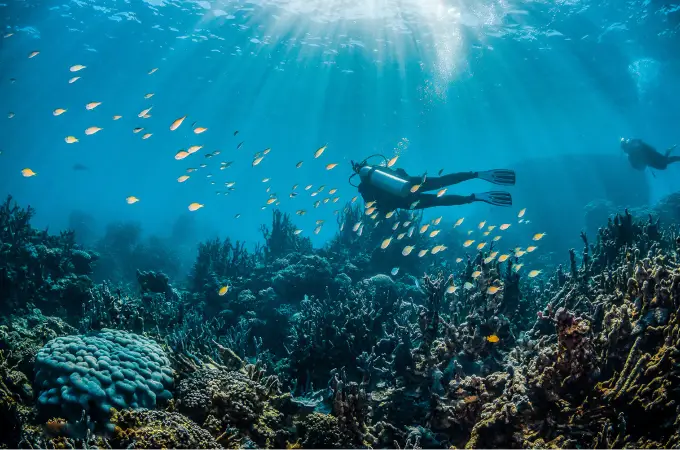The Emerald Coast is known for its stunning white sand beaches and crystal-clear waters, and snorkeling is one of the best ways to explore the underwater beauty of this region.
With miles of coastline, there are plenty of opportunities for snorkeling on the Emerald Coast.
Whether you’re a beginner or an experienced snorkeler, there are plenty of spots to discover.
In this guide, we’ll provide you with the essentials you need to know for a successful and safe snorkeling experience on the Emerald Coast.
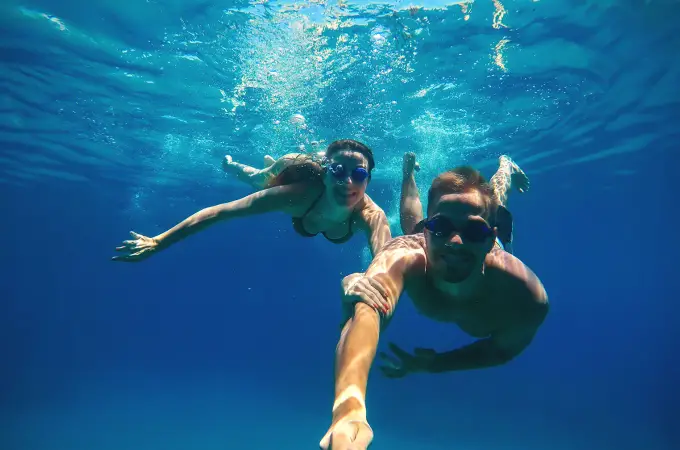
The Essentials: Gear and Safety Tips for Snorkeling
Before you dive into the water, it’s important to have the right gear and know how to stay safe while snorkeling. Here are some essential tips:
- Choose the right snorkeling gear: A good quality mask, snorkel, and fins are essential for a comfortable and enjoyable snorkeling experience. Make sure your mask fits well and doesn’t leak. A dry snorkel is also helpful in preventing water from entering the snorkel. Fins will help you swim more efficiently and cover more ground.
- Check the conditions: Make sure to check the weather and water conditions before you go snorkeling. Strong currents, waves, and winds can make snorkeling dangerous, so it’s important to make sure conditions are safe before you start.
- Stay aware of your surroundings: Always keep an eye on your surroundings while snorkeling. Make sure you know where your boat or shore is, and avoid getting too close to rocks, coral, or other underwater structures that could cause injury.
- Know Your Limits: Snorkeling can be a physically demanding activity, so it’s important to know your limits and take breaks as needed. If you feel tired or out of breath, take a break and rest on the surface for a few minutes.
- Protect Your Skin: The Florida sun can be intense, even in the water. Make sure to wear sunscreen and a rash guard to protect your skin from harmful UV rays.
- Respect the Environment: When snorkeling, it’s important to remember that you are a visitor in the underwater world. Avoid touching or disturbing marine life and refrain from taking anything out of the water. Leave the environment as you found it, so that others can enjoy it in the future.
- Consider a Guided Tour: If you’re new to snorkeling or unfamiliar with the area, consider taking a guided snorkeling tour. A knowledgeable guide can provide safety tips, point out interesting marine life, and help you make the most of your snorkeling experience.
- Stay Hydrated: Snorkeling can be dehydrating, so make sure to bring plenty of water and hydrate before and after your snorkeling session.
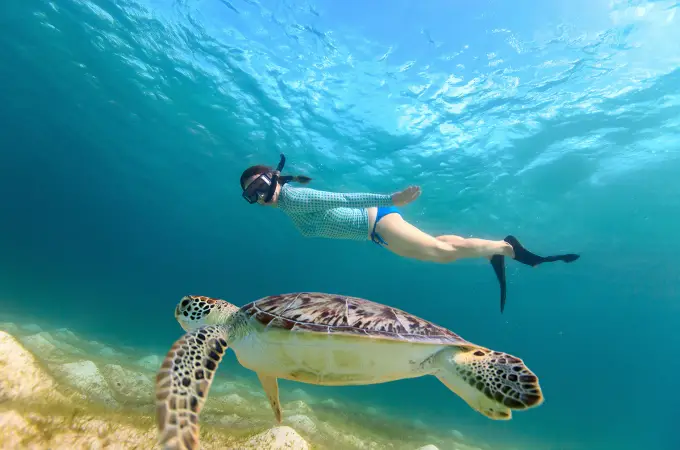
Where to Snorkel: Top Spots on the Emerald Coast
The Emerald Coast is home to many great snorkeling spots, and here are a few of the best:
- Grayton Beach State Park: This park boasts some of the clearest waters on the Emerald Coast, making it a prime spot for snorkeling. The park is also home to an artificial reef that attracts a variety of marine life.
- Destin Jetties: Located at the east end of Destin Harbor, the jetties offer a unique snorkeling experience with a mix of natural and artificial reefs. The area is home to a variety of colorful fish, sea turtles, and even dolphins.
- Navarre Beach Marine Sanctuary: This underwater park is home to over 100 reef structures that provide habitats for a variety of marine life. The park is divided into three snorkeling areas, each with its own unique marine species.
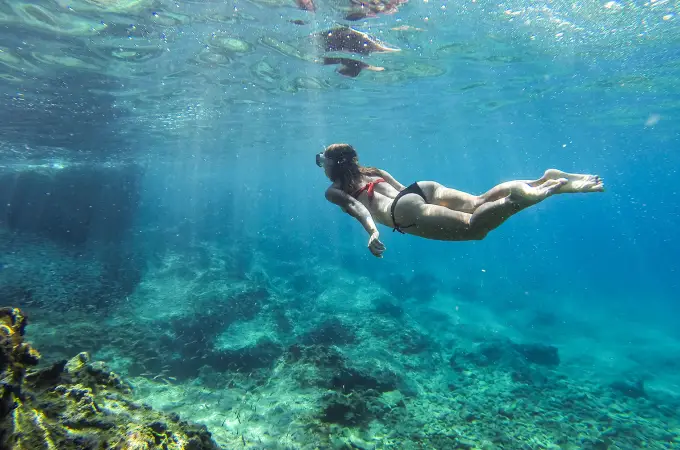
Marine Life to Look Out For in the Emerald Coast
The Emerald Coast is home to a diverse array of marine life, including:
- Sea Turtles: Several species of sea turtles can be found in the waters off the Emerald Coast, including loggerhead, green, and Kemp’s ridley turtles.
- Dolphins: These intelligent creatures are a common sight in the waters off the Emerald Coast. They are known for their playful behavior and are a joy to watch while snorkeling.
- Colorful Fish: There are many species of fish that can be found in the waters off the Emerald Coast, including snapper, grouper, angelfish, and even seahorses.
- Jellyfish: Although not as exciting to see as sea turtles or dolphins, jellyfish are commonly found in the waters off the Emerald Coast. It’s important to be aware of the different types of jellyfish in the area, as some can give painful stings. If you do encounter a jellyfish, try to avoid touching it and move away slowly.
- Stingrays: These flat-bodied fish are commonly found in the sandy shallows off the Emerald Coast. They are generally harmless, but can give a painful sting if stepped on or touched. To avoid stingrays, shuffle your feet along the bottom of the ocean floor instead of taking big steps, as this will alert the stingrays to your presence and they will move out of the way.
- Sharks: While it’s rare to encounter sharks while snorkeling on the Emerald Coast, it’s important to be aware of their presence. If you do see a shark, stay calm and avoid making sudden movements. Slowly swim away from the shark, keeping a safe distance.
Snorkeling on the Emerald Coast is a great way to explore the underwater world and see some of the fascinating marine life that calls this region home.
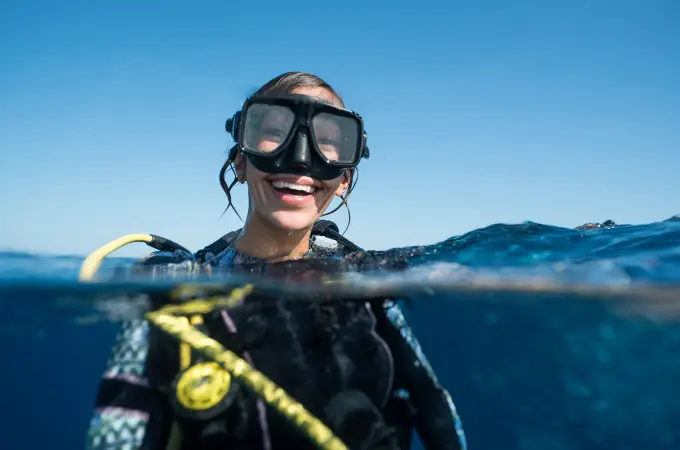
Snorkeling Etiquette: How to Be a Responsible Snorkeler
Snorkeling can be a fun and exciting way to explore the underwater world, but it’s important to be a responsible and respectful snorkeler. Here are some tips for practicing good snorkeling etiquette:
- Don’t Touch the Marine Life: One of the most important rules of snorkeling is to avoid touching or disturbing the marine life. This can cause harm to the creatures and disrupt their natural habitat. Instead, observe the animals from a safe distance and appreciate their beauty without interfering.
- Avoid Kicking Up Sand: When snorkeling, be mindful of your movements and try to avoid kicking up sand or stirring up sediment. This can reduce visibility and harm the underwater environment. Instead, swim slowly and steadily, and be aware of your surroundings.
- Stay Away from Corals: Coral reefs are fragile and can be easily damaged. Avoid swimming or touching the corals, as this can cause irreparable harm. If you need to navigate around a coral reef, swim slowly and carefully and avoid touching any of the structures.
- Follow Local Regulations: Many areas have specific regulations for snorkeling, such as restricted areas or protected species. Make sure to research the rules and regulations of the area you’re snorkeling in, and follow them carefully to help protect the environment.
By following the tips and suggestions in this guide, you can have a safe and memorable snorkeling experience. So grab your gear, head to the beach, and get ready to discover the magic of the Emerald Coast’s underwater wonders!

